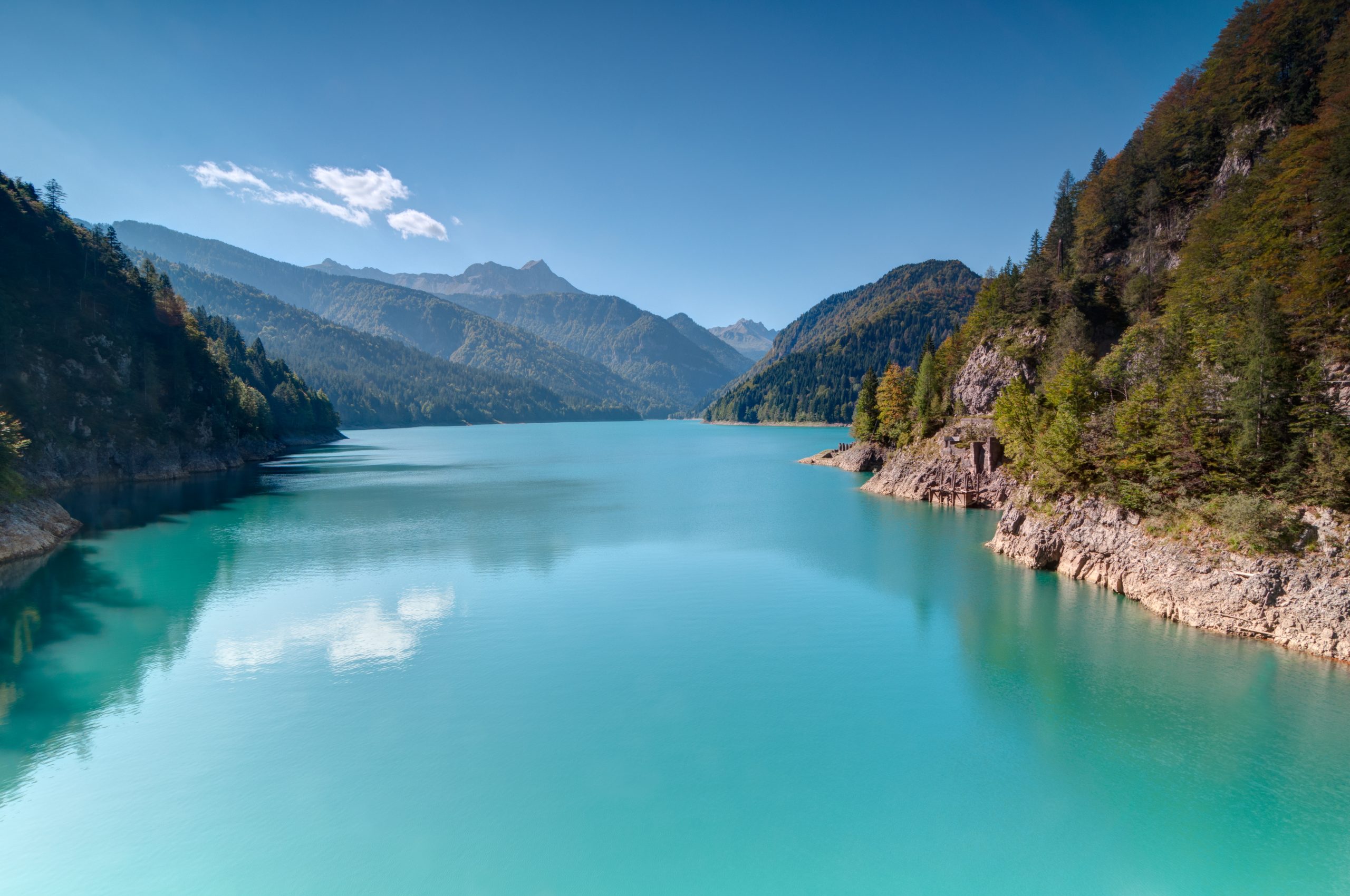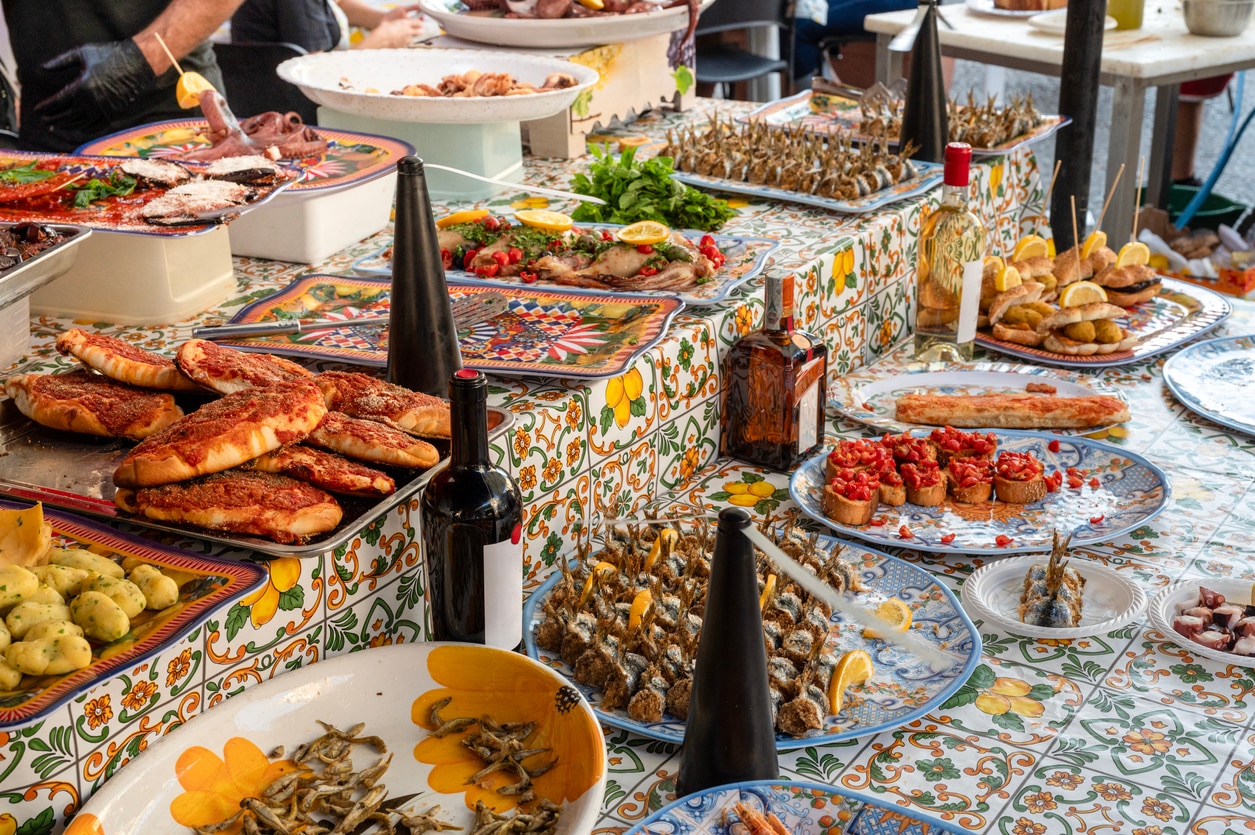
Discover the ten most fascinating places in Friuli Venezia Giulia: Trieste, the giant cave, Udine, the lakes of Fusine, Cividale, Pordenone, Gorizia, Aquileia, Lignano Sabbiadoro and Carnia
Friuli Venezia Giulia is one of Italy’s most captivating and diverse regions, known for its stunning landscapes, rich history, and authentic cuisine. From the Alps to the Adriatic, this region offers a perfect blend of nature, art, and tradition. If you’re wondering what to see in Friuli Venezia Giulia or what Friuli Venezia Giulia is known for, this guide to the top 10 places will help you explore its many hidden treasures.
Ready for adventure? Let’s discover together ten places to visit in Friuli Venezia Giulia:
- Trieste: the port, the Roman theater and the Castle of Miramare
- The giant cave in the Trieste Karst
- Udine and traditional Friulian cuisine
- The Fusine lakes in the Julian Alps
- Cividale del Friuli: the Devil’s Bridge
- Pordenone, the Noncello river and the nearby historic villages
- Gorizia, Collio and Friulian wines
- Aquileia: the Roman city, a UNESCO World Heritage Site
- Lignano Sabbiadoro: Sabbiadoro Beach, Pine Forest and the Riviera.
- Carnia: Lake Sauris and the Forni di Sopra
1. Trieste: the port, the Roman theater and the Castle of Miramare
Trieste is the capital of the region and is mainly linked to the sea by its large and important port. It is a frontier city in Art Nouveau style with a romantic atmosphere and home to famous writers such as Italo Svevo and James Joyce.

The historic centre is full of Art Nouveau buildings and small squares, with plenty of nightlife. It is a lively city where the quality of life is very high. There are also Austro-Hungarian, Slovenian and Roman influences, testifying to the history of the entire region, which has been contested by different nations over the centuries.
Don’t miss the romantic Castle of Miramare, a 19th-century castle perched on the edge of the sea, offering panoramic views. Trieste is a gateway to exploring places to visit near Trieste like the Karst Plateau and charming coastal towns.
2. The giant cave in the Trieste Karst
For those wondering if Trieste has more to offer beyond the city, a visit to the Giant Cave is a must. Located in the Trieste Karst, this impressive cave is one of the largest in the world and offers an awe-inspiring underground adventure.

The Trieste Karst is a plateau of mostly limestone or carbonate rock between Friuli Venezia Giulia, Slovenia and Croatia. Many battles were fought here during the First World War, and you can still see evidence of the conflict today.
One of the most visited and fascinating places in the Trieste Karst is Grotta Gigante, a huge karst cave open to the public. The hidden immensity of the Giant Cave makes it an exciting and unique underground experience. Different routes can be followed, but the number of visits is limited, so it is best to book a guide and the most suitable route in advance.
If you’re planning things to do in Friuli Venezia Giulia, hiking in the Karst and exploring its natural wonders is a must.
3. Udine and traditional Friulian cuisine
Udine is a historic city with Venetian-Gothic architecture and a lively atmosphere. Udine is famous for its

- quality of life,
- the traditional Friulian cuisine,
- the Castle which houses the Civic Museums,
- the Patriarchal Palace which houses the Tiepolo Galleries.
Udine is also a university city on a human scale and can be visited in a day. Don’t miss a stroll through the historic centre, full of taverns and typical restaurants where you can taste and drink the excellent Tajur, an excellent wine from Friuli. Not far from Udine is San Daniele, the town of prosciutto, famous throughout Italy.
4. The Fusine lakes in the Julian Alps

If you’re looking for natural wonders, the Fusine Lakes in the Julian Alps are on of the best places to visit in Friuli Venezia Giulia. These glacial lakes, surrounded by uncontaminated woods, are a true paradise for hikers and nature lovers, just a few kilometres from the Slovenian border under Mount Mangart. The crystal clear waters of Lago Superiore and Lago Inferiore offer a tranquil setting for a peaceful day out in nature. Located in the protected area of the Fusine Lakes Natural Park.
For the more adventurous, there is the Zacchi Refuge and the Ponza Hut, splendid vantage points from which to admire the entire valley. An experience in the midst of nature that will leave you speechless.

Italy’s best lakes: the 10 most famous ones
Dive into the beauty of Italy’s lakes. Perfect spots for relaxation and adventure. Find your serene escape now!
5. Cividale del Friuli: the Devil’s Bridge

Cividale del Friuli is an ancient Roman town that has been declared a UNESCO World Heritage sites. It is famous for its Devil’s Bridge over the Natisone River, built in 1442. This picturesque town is a must-see for history lovers. In fact, the city was founded in Roman times in II B.C. by Julius Caesar and over time, became an important centre of the Lombards and the seat of the Patriarchate of Aquileia. Until 1700 it was one of the most important and influential cities in the whole region.
Explore the Lombard Temple, the Celtic Hypogeum, and the Patriarchal Palace to immerse yourself in the region’s rich past. Cividale is also the starting point for exploring the important Natural Park of the Natisone Valleys, where you can follow themed trails on nature and art in history. Don’t miss the Gadda path and the path of the 44 votive churches.
6. Pordenone, the Noncello river and the nearby historic villages

Nestled on the banks of the Noncello River, Pordenone is a charming medieval town with plenty of nearby historic villages worth visiting. The Greater Pordenone Metropolitan Area is known for its Renaissance palaces and vibrant cultural scene. Its history is linked to the famous Noncello river that runs through the whole city. The old town center features the ancient Town Hall and numerous stores on Corso Vittorio Emanuele II.
Explore nearby gems like Spilimbergo, famous for its mosaic school, and Sacile, with its Venetian-style architecture. Also worth visiting are Cordovado, Sacile with its Venetian architecture and Renaissance palazzi, San Vito al Tagliamento with its medieval charm, and Sesto al Reghena, famous for the splendid Benedictine abbey of St. Maria in Sylvi.
7. Gorizia, Collio and Friulian wines
Is Gorizia worth a visit? By all means! The great painter Max Klinger described it as “The most beautiful open door to Italy“!

This border town, rich in Italian, Slovenian, and Austro-Hungarian influences, offers a unique cultural mix. This city, through which flows the River Isonzo, is a blend of the greatest European cultures, and this is reflected in its streets, squares, clubs, and food.
It’s also the gateway to the Collio wine region, famous for producing some of the best white wines in the world, including Ribolla, Tocai and Sauvignon Blanc. Wine lovers will enjoy touring the lush vineyards and tasting Friuli’s world-class wines.
The city also hosts numerous events that showcase the culinary delights of the world, the most famous and prominent being the Gusti di Frontiera, usually held in September.
8. Aquileia: the Roman city, a UNESCO World Heritage Site

Aquileia, an ancient Roman city and a UNESCO World Heritage Site, is a must-visit for history buffs. Known for its Basilica and the world’s largest and oldest mosaic floor, dating back to the 4th century and depicting scenes from the Old Testament, Aquileia offers a glimpse into the region’s Roman past. Don’t miss the archaeological remains, including the Roman Forum and river port.
9. Lignano Sabbiadoro: Sabbiadoro Beach, Pine Forest and the Riviera.

One of the most popular seaside resorts in Friuli Venezia Giulia is Lignano Sabbiadoro. This Adriatic gem has something for everyone, whether you’re looking for family-friendly beaches, lively nightlife or tranquil retreats. Its pristine beaches and Blue Flag status make it one of the best places to visit in Friuli Venezia Giulia for a seaside holiday.
Lignano is divided into three districts:
- Sabbiadoro is ideal for families and children thanks to its many play areas, supermarkets and shops.
- The Pinewood, Pineta, is more suitable for young people because it offers a lot of fun thanks to the many discos and famous nightclubs.
- The Riviera, on the other hand, is the quietest area for those who want to relax in tne midst of nature.

Italy’s Best Beaches in Summer
Explore Italy’s best summer destinations with our comprehensive guide. From the stunning beaches of Sardinia to vibrant cultural events, find everything you need for the perfect Italian summer vacation.
10. Carnia: Lake Sauris and the Forni di Sopra

Carnia, nestled in the Carnic Alps, is a natural paradise perfect for outdoor enthusiasts. Lake Sauris and the town of Forni di Sopra offer breathtaking mountain views, hiking trails, and charming alpine villages. In winter, the area becomes a top destination for skiing and snow sports. In autumn, the colorful landscapes give the visitor real postcards that highlight the many beautiful villages. If you’re seeking things to do in Friuli Venezia Giulia, Carnia provides endless opportunities for adventure in every season.
Getting to Friuli Venezia Giulia with Italo
Whether you’re exploring the cities of Trieste, Udine, Pordenone, or Gorizia, or venturing into the Julian Alps and Carnic Alps, Friuli Venezia Giulia has something to offer every traveler. From authentic Friulian cuisine to stunning landscapes, this region is one of Italy’s best-kept secrets. Get ready to discover the beauty of Friuli Venezia Giulia with Italo’s high-speed trains that connect you to all the best destinations.






